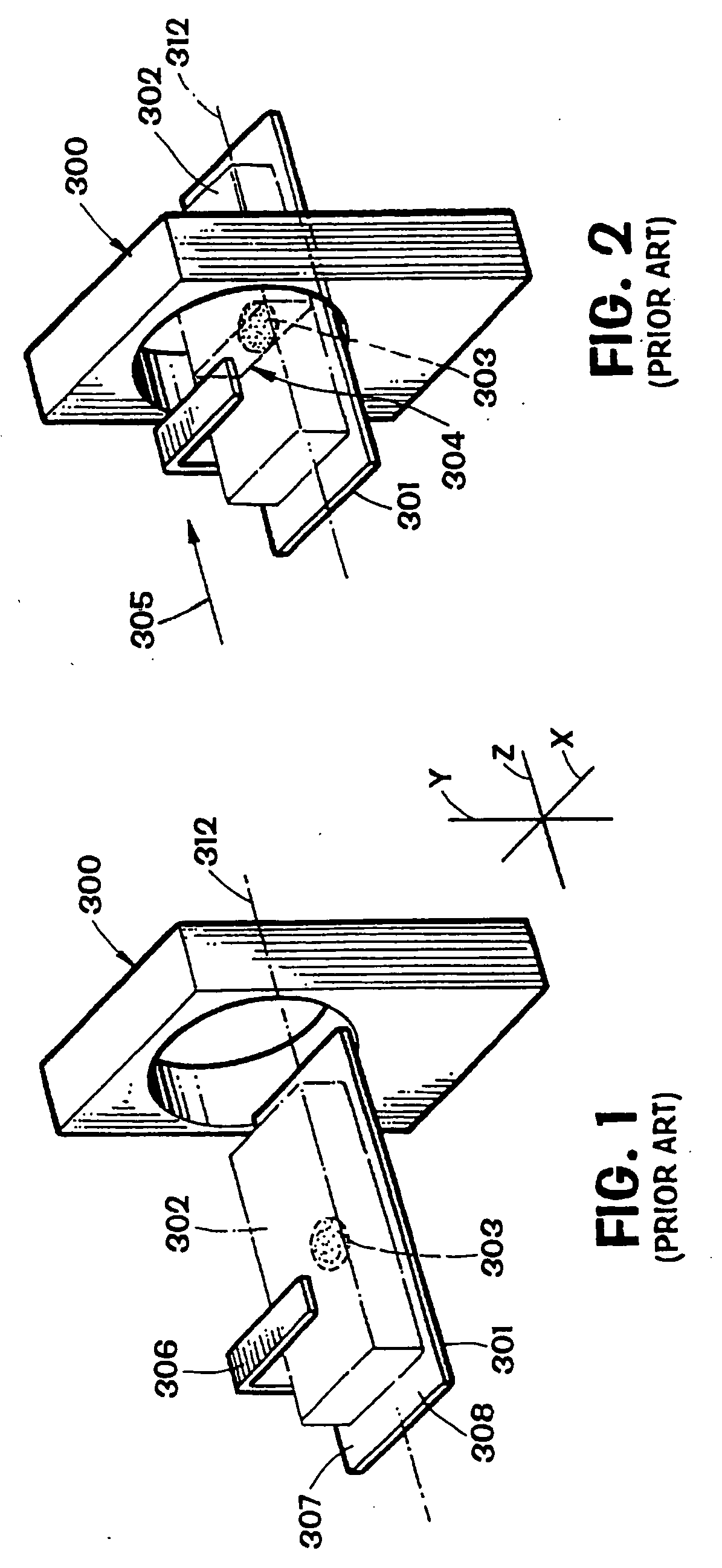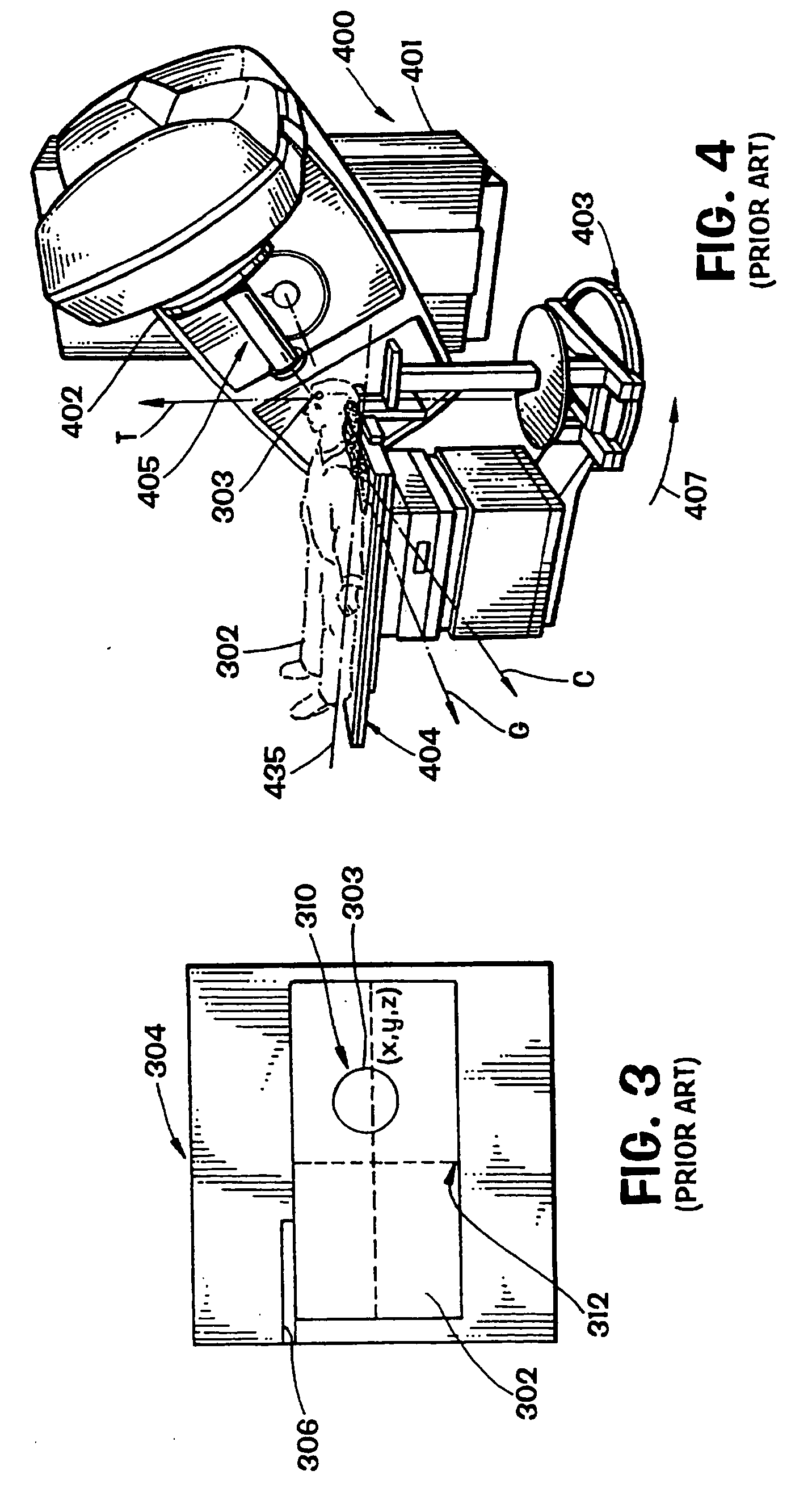Method and apparatus for target position verification
a technology of target position and target position, applied in the field of target position verification, can solve the problems of increased risk of damaging healthy tissue, sensitive structures, and unhealthy tissue surrounding, and achieve the effect of preventing healthy tissue surrounding
- Summary
- Abstract
- Description
- Claims
- Application Information
AI Technical Summary
Benefits of technology
Problems solved by technology
Method used
Image
Examples
Embodiment Construction
[0032] With reference to FIG. 1, a conventional imaging device 300 is schematically shown and includes a conventional imaging table 301, upon which is disposed a patient 302 having a tumor, or target, 303 within the patient's body 302. As previously discussed, the use of the term “target” throughout this specification, including the claims, includes, as appropriate, a tumor or an organ, or portion thereof, to be treated, or an organ, sensitive structure, or portion thereof, which is not to be treated in the radiation therapy plan. Imaging device 300 may be a computerized tomographic (“CT”) scanning device, as illustrated in FIG. 1, or may alternatively be a magnetic resonance (“MR”) imaging device, as are known in the art. CT scanning devices, such as imaging device 300, produce an image representing a “slice” of body tissue 304 (shown in phantom lines in FIG. 2), one such slice being illustrated in FIG. 3. A plurality of images, or diagnostic images, 304 are obtained by the imaging...
PUM
 Login to View More
Login to View More Abstract
Description
Claims
Application Information
 Login to View More
Login to View More - R&D
- Intellectual Property
- Life Sciences
- Materials
- Tech Scout
- Unparalleled Data Quality
- Higher Quality Content
- 60% Fewer Hallucinations
Browse by: Latest US Patents, China's latest patents, Technical Efficacy Thesaurus, Application Domain, Technology Topic, Popular Technical Reports.
© 2025 PatSnap. All rights reserved.Legal|Privacy policy|Modern Slavery Act Transparency Statement|Sitemap|About US| Contact US: help@patsnap.com



